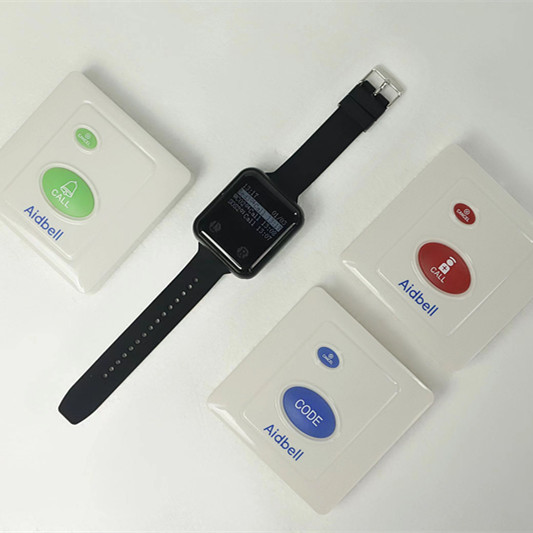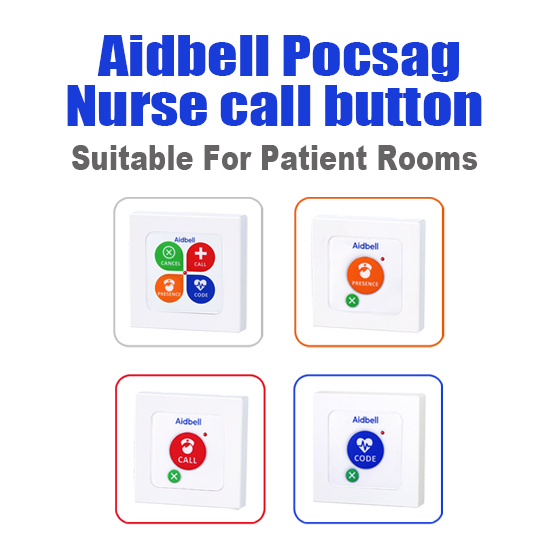How a Wireless Nurse Call System Enhances Patient Care

Background
Technology of wireless nurse call system plays a vital role in enhancing patient outcomes and operational efficiency. Designed to streamline communication between patients and healthcare providers. This technology integrates seamlessly into hospitals, nursing homes, and other healthcare settings to facilitate swift response times and streamlined workflows. By eliminating the need for hard-wired nurse call buttons, these systems provide a more efficient and reliable way for patients to get the help they need.

Nurse call light system
What is a wireless nurse call system?
A wireless nurse call system is a communication tool that allows nurses and other medical staff to communicate with each other and with patients in real time. This type of system can be used in hospitals, clinics, nursing homes, and other healthcare facilities.
Wireless nurse call systems are becoming increasingly popular in healthcare facilities as a way to improve patient care. These systems allow nurses and other medical staff to be alerted when a patient needs assistance, whether it is for a medical emergency or simply to request help getting out of bed.
By eliminating the need for hard-wired nurse call buttons, these systems provide a more efficient and reliable way for patients to get the help they need.
Significantly improving patient care through several key mechanisms:
· Provides real-time patient monitoring
A primary benefit of a wireless nurse call system is its ability to provide real-time information about a patient’s condition. This system sends immediate alerts to nurses when there are changes in vital signs or other critical health indicators. This timely notification helps reduce response times, ensuring patients receive prompt attention.
· Helps to coordinate care among healthcare team
Effective coordination among healthcare teams is facilitated by the wireless nurse call system. Alerts are disseminated to all relevant team members when a patient’s condition changes, enabling a swift and coordinated response to patient needs. This streamlined communication enhances efficiency and patient outcomes.
· Improves patient-caregivers communication
The system enhances communication between patients and caregivers by facilitating messages between them. This direct line of communication fosters better understanding of the patient’s condition and care plan, thereby reducing medication errors and improving overall patient safety.
· Helps to track a patient’s progress and recovery
Tracking a patient’s progress and recovery becomes more efficient with the use of a wireless nurse call system. It allows continuous monitoring of vital signs, medication administration, and other health metrics, aiding in early identification of complications and adjustment of treatment plans.
· Increased patient safety and disaster preparedness
The system contributes to increased patient safety by enabling rapid response to emergencies. Nurses can promptly communicate and coordinate actions without leaving the patient’s side, crucial in urgent situations where every second counts.
· Greater mobility for caregivers
Offering flexibility and mobility, the system enables nurses to communicate from any location within the facility. This freedom of movement ensures that caregivers can respond promptly to patient needs while maintaining efficient workflow.
· Enhanced security
A wireless nurse call system can also provide enhanced security. With this type of system, only authorized personnel can access the system. This helps to ensure that only those with the proper credentials can view or listen to communications. Additionally, a wireless nurse call system can help to prevent eavesdropping and other types of unauthorized access.
Types of Wireless Nurse Call Systems
There are several types of wireless nurse call systems available on the market. The most popular type is the pager system, which uses a pager to alert the nurse when a call is placed. Other types of systems include voice-activated systems and GPS-based systems.
Pagers are the most popular type of system because they are easy to use and can be carried with the nurse at all times. Voice-activated systems are less popular because they require the nurse to remember a code to activate the system. GPS-based systems are becoming more popular because they allow the nurse to track the location of the patient.

The most important thing to consider when choosing a wireless nurse call system is the type of patients that will be using the system. For example, pagers are not well suited for use with pediatric or geriatric patients. Voice-activated systems may be more appropriate for these types of patients. GPS-based systems are best suited for use with mobile patients who may be difficult to track.
It is also important to consider the coverage area of the wireless nurse call system. Pagers have a limited range and will only work if the patient is within range of the pager. Voice-activated systems have a larger coverage area, but they may not be able to reach all patients. GPS-based systems have the largest coverage area, but they may be more expensive.
The cost of the wireless nurse call system is another important consideration. Pagers are the least expensive option, but they have a limited range and may not be able to reach all patients. Voice-activated systems are more expensive, but they have a larger coverage area. GPS-based systems are the most expensive, but they have the largest coverage area.
Conclusion
Incorporating a wireless nurse call system into healthcare facilities not only enhances patient care by providing real-time information, coordinating care among teams, and reducing response times but also improves communication between patients and caregivers. These combined benefits contribute to increased patient safety, satisfaction, and overall quality of care.
We can help you find a wireless nurse call system most suitable for your facility. Feel free to contact us today.



